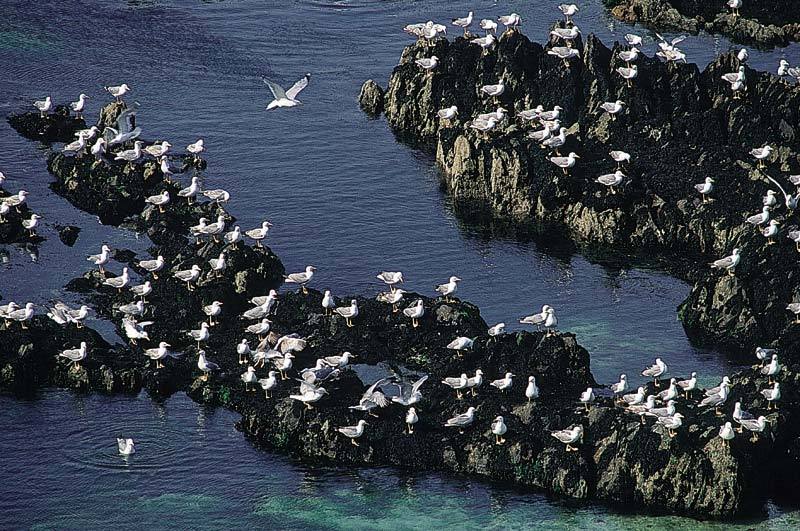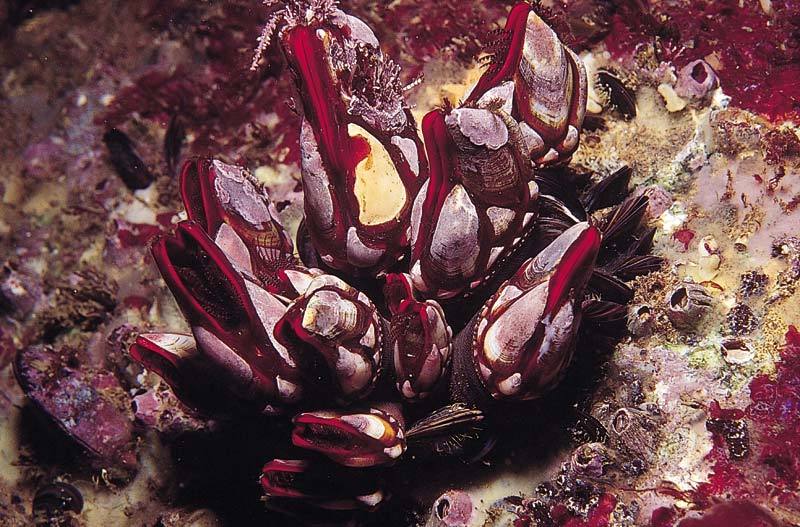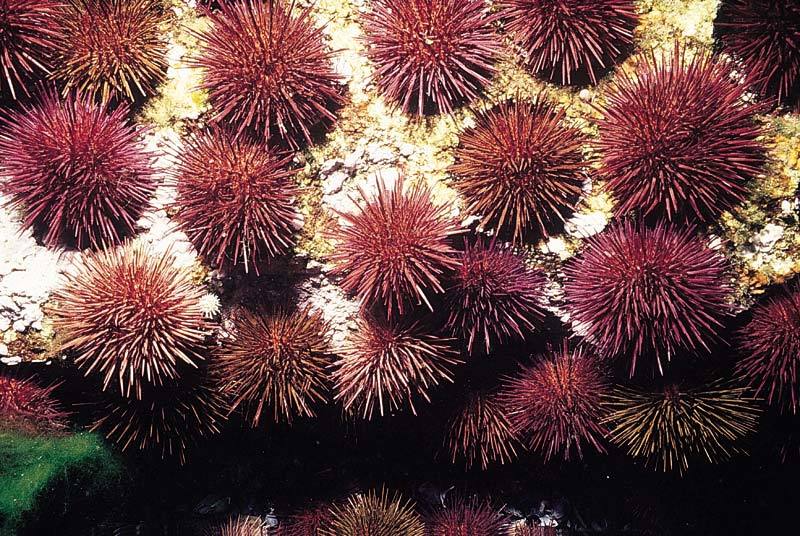The sea is not only distinguished by its values and its representativeness over the land, it also has a great influence on it.
The strong variation of environmental factors experienced in the coastal area influenced by the tides makes a lot of seabed organisms be placed on horizontal strips according to the needs and the resistance to each of the sides. This is specially obvious on the rocky coast where the organisms are less mobile than in soft, non-solid substrates.
The top tidal zone- place which the water doesn´t reach- (plants and lichen) is in the highest level of high tides where, although there is a land atmosphere, conditions are extreme due to splashes, salinity and sunstrokes. For this reason, only adapted animals and plants can live in this stripe.
Between the low and the high tide there´s mid-tidal zone (mussels, barnacles, striped barnacles or limpets) where the temperature, salinity and humidity conditions drastically change every six hours with the low and high tide so organisms adapted to these extreme changes must withstand the sea strength as the tide rises and falls. They are distributed vertically according to their capacity to stand these difficult conditions although some of the adapted species are comfortable with things such as oxygen waters, abundant light and food as they are shallow and there is contant movement.
From the low mid-tidal zone limit to 30 meter depth we have the so-called “infra-coastal area”, a totally marine environment with more stable conditions.


